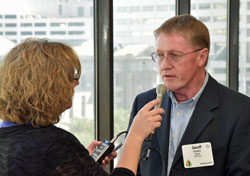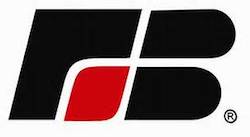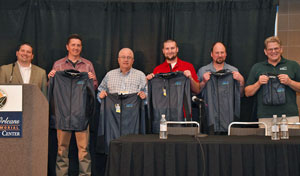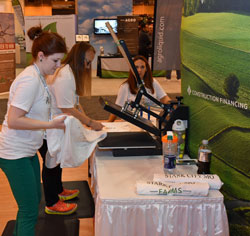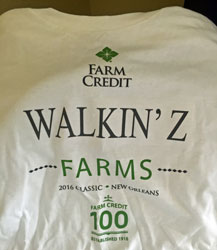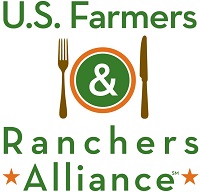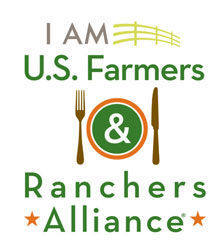 We’re starting a new series here on AgWired and we’re calling it “I AM USFRA.”
We’re starting a new series here on AgWired and we’re calling it “I AM USFRA.”
Most of you have probably heard about the U.S. Farmers and Ranchers Alliance, which was started in 2010 with the goal of engaging in dialogue with consumers who have questions about how today’s food is grown and raised. USFRA consists of nearly 100 agricultural organizations and agribusiness partners and the goal of I AM USFRA is to learn about those partners and why they support this coalition.
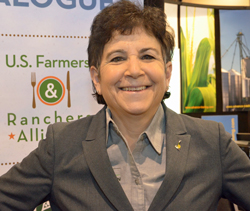 To learn who USFRA is, we start at the top with chairwoman Nancy Kavazanjian who represents the United Soybean Board (USB) on the board of the USFRA. Nancy has been farming in Wisconsin with her husband for 35 years, but you might detect a New York accent when you hear her speak. “I grew up on Long Island, so I was a suburban girl who always wanted to live on a farm – finally living my dream!” she said during an interview at Commodity Classic. Nancy is the second chair of USFRA – the first was former American Farm Bureau president Bob Stallman.
To learn who USFRA is, we start at the top with chairwoman Nancy Kavazanjian who represents the United Soybean Board (USB) on the board of the USFRA. Nancy has been farming in Wisconsin with her husband for 35 years, but you might detect a New York accent when you hear her speak. “I grew up on Long Island, so I was a suburban girl who always wanted to live on a farm – finally living my dream!” she said during an interview at Commodity Classic. Nancy is the second chair of USFRA – the first was former American Farm Bureau president Bob Stallman.
Nancy says USB was one of the six founding members of USFRA back in 2010. “The major checkoff boards all found themselves at a meeting one time and realized they were all doing consumer outreach,” she said. “They realized that if they all got together and pooled their resources and spoke in a common voice they could have a lot more impact on that consumer.” She says that USB has been actively involved in USFRA on many levels, particularly with the launch of the movie “FARMLAND” which has become a great educational tool for USFRA.
Learn more about Nancy, USB, and USFRA in this interview: Interview with Kavazanjian


